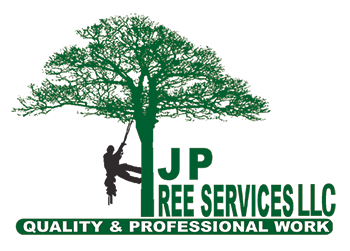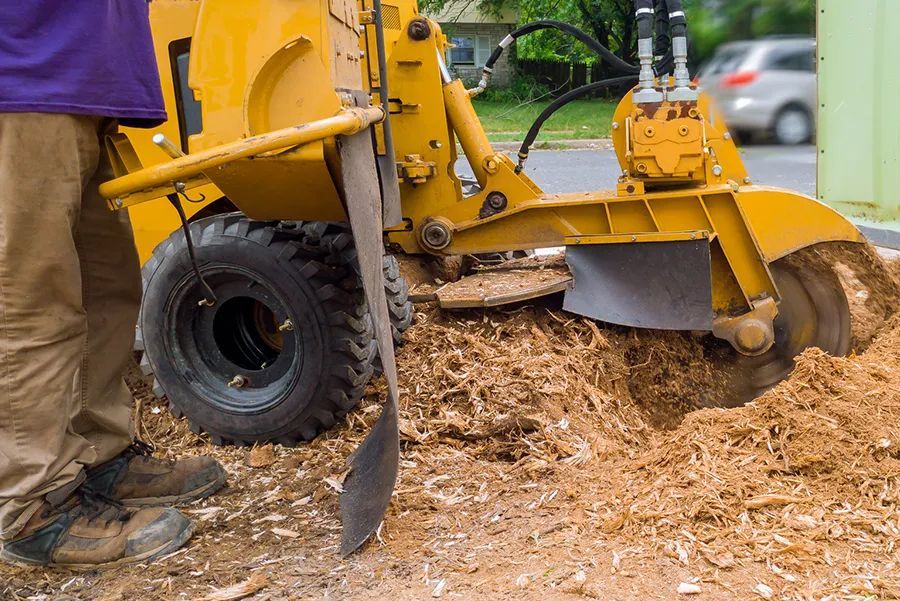
While a stump might seem harmless, it can actually create several problems for your landscape over time. From safety hazards to pest infestations, old stumps can detract from your property’s appearance and health. At J P Tree Services, we provide expert stump grinding and removal in the greater Dallas area. Here’s a look at four ways that stump removal can enhance your property. Improve Your Home’s Curb Appeal A tree stump left in the middle of an otherwise beautiful lawn can be an eyesore. It breaks up the clean lines of your landscape and gives your yard an unfinished appearance. By removing old stumps, you can instantly improve curb appeal and make your property look more polished. Whether you plan to sell your home soon or simply want to take pride in its appearance, stump removal is a quick and effective upgrade. Eliminate Tripping Hazards Tree stumps can be dangerous, especially in areas where children play or people walk frequently. They create unexpected obstacles that can lead to trips, falls, or damage to lawn equipment. Removing stumps makes your yard safer and easier to navigate, particularly if the area is used for outdoor activities or gatherings. A smooth, level lawn also makes mowing and maintenance much simpler. Prevent Pest Infestations Old stumps are a magnet for pests such as termites, carpenter ants, and beetles. As the wood decays, it provides an ideal nesting and feeding site for these insects, which can eventually spread to healthy trees or even your house. Stump removal eliminates this breeding ground, helping to protect your property from potential infestations. Free Up Space for Landscaping A leftover stump limits how you can use your yard. Removing it opens up valuable space for new landscaping features such as flower beds, fresh sod, garden areas, or even a patio. Without the obstruction of a stump and its roots, you have more flexibility to design and enjoy your outdoor space however you wish. Stump Grinding & Removal in Dallas, TX When you need stump removal in Dallas, TX and the surrounding area, contact J P Tree Services at (945) 235-2029 . Feel free to give us a call to ask for an arborist estimate in greater Dallas, TX!

When severe weather strikes, even a mostly healthy looking tree can become a major safety hazard. High winds, heavy rain, and lightning can expose or worsen structural weaknesses, causing a tree to fall and damage nearby structures or power lines. Recognizing the warning signs of a potentially unstable tree before a storm hits can help you prevent costly damage and protect your family’s safety. At J P Tree Services, we provide expert tree removal in the greater Dallas area. Here are four signs that a tree may be at greater risk of crashing down during a storm. Cracked Trunk Cracks, splits, and cavities in the trunk are serious indications of structural weakness. These openings can occur from storm damage, improper pruning, or internal decay. Once the trunk’s integrity is compromised, the tree’s ability to withstand strong winds is drastically reduced. A split trunk is especially dangerous because it may fail without warning during the next heavy storm, posing a high risk to anything nearby. Root Damage or Decay Healthy roots are essential for keeping a tree upright during a storm. Signs of root damage include fungus growing near the base, soil heaving, or visible decay around the root collar. Roots can become weakened from construction or prolonged saturation from rain. Once the root system is compromised, the tree can lose its grip on the soil and may topple over during severe weather. Trunk Is Significantly Tilting A tree that leans noticeably to one side is often unstable, especially if the lean has worsened over time. A sudden or significant tilt may indicate that the root system has been compromised, reducing the tree’s ability to anchor itself in the ground. While some trees naturally tilt at a safe angle, a lean accompanied by exposed roots or recent shifting is a red flag. If a tree’s tilt is new or increasing, it should be inspected by a professional right away. Fungal Growth or Internal Rot The presence of fungal growth on the trunk or around the base of a tree often indicates internal decay. Rot weakens the wood from within, causing instability. If you notice fungal growth or soft, decaying wood, it’s best to have the tree assessed immediately before it becomes a worsening safety hazard. Tree Removal in Dallas For expert tree removal in Dallas and the surrounding area, contact J P Tree Services at (945) 235-2029 . Feel free to give us a call to arrange an arborist estimate in Dallas, TX!
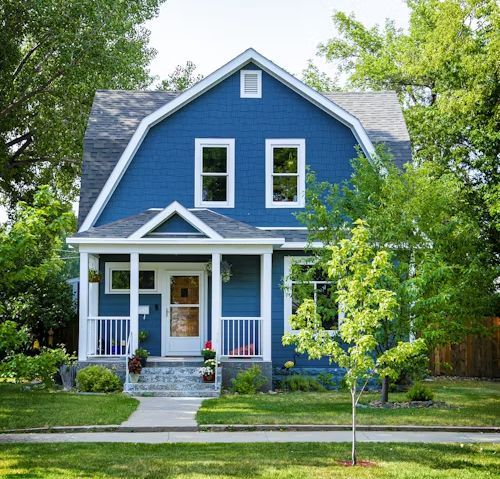
When a tree dies, it can quickly turn into a liability. While it might seem harmless to leave a dead tree standing, the truth is that dead trees pose serious risks to your home, your safety, and even your landscape. Acting quickly to remove a dead tree is the best way to protect your property. At J P Tree Services, our team provides expertise with identifying and removing dead trees in the greater Dallas area. Here are four important reasons why dead trees should be removed promptly. Keep Your Family and Neighbors Safe A dead tree can be a serious danger to people. Falling limbs or a collapsing tree can cause injuries to anyone nearby. If the tree is close to a sidewalk, driveway, or neighboring yard, it poses an even greater risk. Prompt removal eliminates the chance of accidents and creates a safer environment. Avoid Property Damage Dead trees are structurally weak, which makes them more likely to lose limbs or topple over completely. During storms or high winds, falling branches can damage your roof, vehicles, fencing, or other structures. Removing a dead tree before it has the chance to fall saves you from costly repairs and helps ensure your home remains safe. Stop the Spread of Pests and Disease Dead trees often attract insects and fungi, which can spread to other healthy trees and plants in your yard. Termites could even move from a dead tree into your home’s structure, causing bigger problems. Removing a dead tree helps prevent pests and diseases from infesting and spreading across your property. Maintain the Beauty of Your Landscape A dead tree is unattractive and can drag down the overall appearance of your yard. Its bare branches and decaying bark detract from your landscaping efforts and curb appeal. By removing it, you create space for new plantings or other landscaping upgrades that enhance the look and feel of your property. Tree Removal in Dallas When you need tree removal in Dallas and the surrounding area, contact J P Tree Services at (945) 235-2029 . Feel free to give us a call to request an arborist estimate in Dallas, TX!
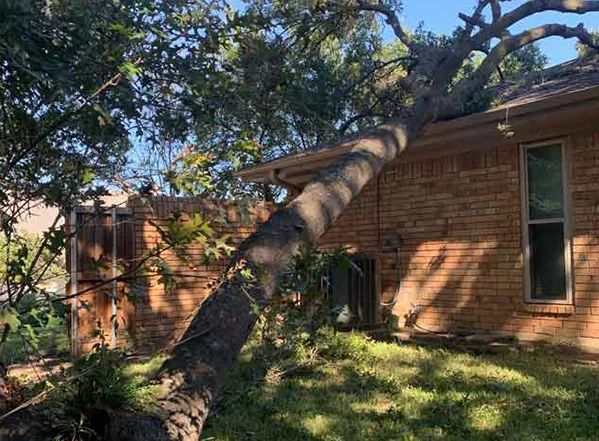
Big trees can pose serious risks if they become unstable. When a large tree is structurally compromised, it may collapse with little to no warning, potentially causing property damage or injury. Recognizing early signs of instability can help you take action before disaster strikes. At J P Tree Services, we can determine if your big tree is at imminent risk of toppling, and then safely remove it if necessary. Here are four warning signs that a big tree on your property may be at risk of sudden collapse. Leaning More Than Usual While some trees naturally grow at a slight angle, a sudden or significant lean can be a major red flag. A tree that starts to lean more over time may be suffering from root damage, soil erosion, or internal decay. If the lean appears to be getting worse, especially after a storm or high winds, it’s a strong indication that the tree’s anchoring system is failing. This can lead to the tree toppling over without much warning. Cracks in the Trunk or Major Limbs Visible cracks or splits in a tree’s trunk or large limbs suggest that the tree’s structural integrity has been compromised. These cracks can deepen over time, especially under the stress of wind. If a crack runs deep into the core of the tree, it may be only a matter of time before it breaks apart. Monitoring and addressing these signs early can prevent a dangerous collapse. Fungal Growth Around the Base Fungal growth, especially appearing near the base of the tree or on the trunk, often points to internal decay. Because this damage isn’t always visible externally, fungus may be one of the few clues that the tree is rotting internally. A decaying root system significantly increases the likelihood of the tree falling over without warning. Heaving Soil Around the Base If you notice raised or disturbed soil around the base of the tree, especially after a period of high winds or rain, it could be a sign that the root system is shifting or breaking. This “heaving” effect can indicate that the tree is in the process of uprooting. A tree with compromised roots lacks the support needed to remain upright and may collapse suddenly. Tree Removal in Dallas For expert tree removal in Dallas and the surrounding area, contact J P Tree Services at (945) 235-2029 . Feel free to give us a call to ask for an arborist estimate in Dallas, TX!
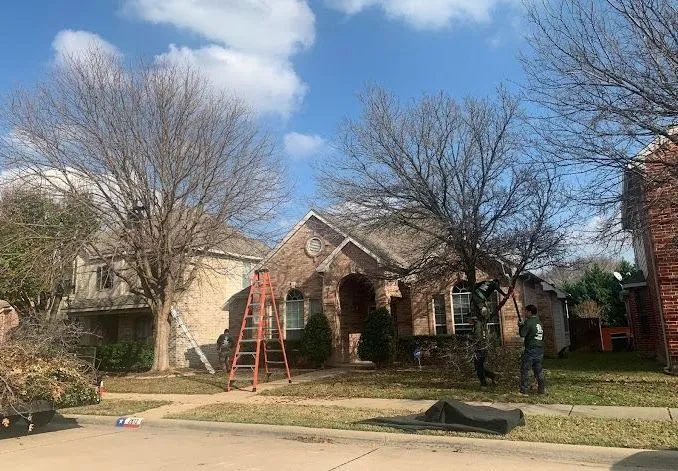
A beautifully maintained landscape makes a lasting first impression. Whether you’re planning to sell your home or simply want to enjoy a more attractive outdoor space, your trees play a major role in how your property looks. Healthy, well-shaped trees add shade, structure, and natural beauty, while neglected or overgrown trees can make your yard feel messy. That’s where an arborist comes in. A certified arborist specializes in tree care and can offer expert solutions to enhance both the health of your trees and the appearance of your entire landscape. Here are four ways an arborist can improve your property's curb appeal. Strategic Tree Pruning for Shape and Balance Proper pruning not only promotes healthy growth but also improves the symmetry and appearance of your trees. An arborist knows how to prune in a way that enhances a tree’s natural shape without causing harm. This can make a dramatic difference in how tidy and balanced your yard looks. Clean, well-pruned trees frame your home beautifully and create a sense of order that boosts your property's visual appeal. Safe Removal of Dead or Unattractive Trees Not all trees add to your home’s charm. Dead, diseased, or poorly placed trees can actually detract from the appearance of your yard and pose safety risks. An arborist can assess whether a tree is too far gone to save and, if so, remove it safely. Getting rid of an unsightly or hazardous tree opens up space and improves the overall look and feel of your landscape. Treatment of Tree Diseases and Pests Unhealthy trees often show signs of stress like sparse foliage, discoloration, or visible damage. These symptoms can make your entire yard appear neglected. An arborist is trained to diagnose and treat a range of tree diseases and pest infestations. By restoring tree health, they help your landscape look vibrant again. Healthy trees contribute to a strong, polished curb appeal. Expert Tree Planting for Long-Term Beauty Choosing the right tree species and planting location is essential for long-term curb appeal. An arborist can recommend trees that thrive in your climate and complement your home’s architecture and layout. With their help, new trees are planted with proper spacing, soil preparation, and planning. ISA-Certified Arborist in Dallas When you need professional tree care in Dallas and the surrounding area, contact J P Tree Services at (945) 235-2029 . We provide expertise with both residential and commercial arborist services in Dallas. Feel free to give us a call to request an arborist estimate in Dallas, TX!
